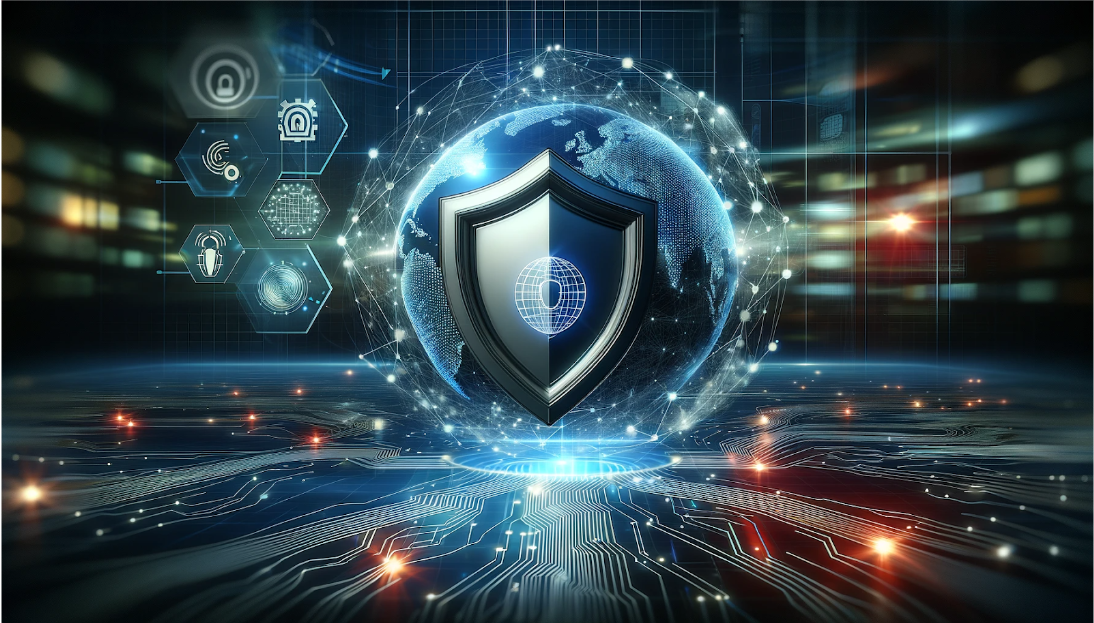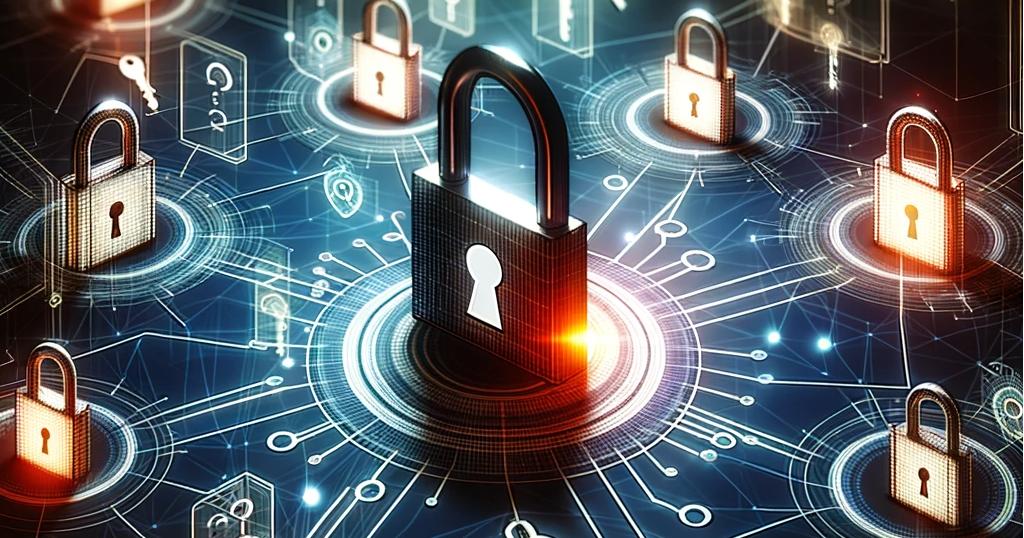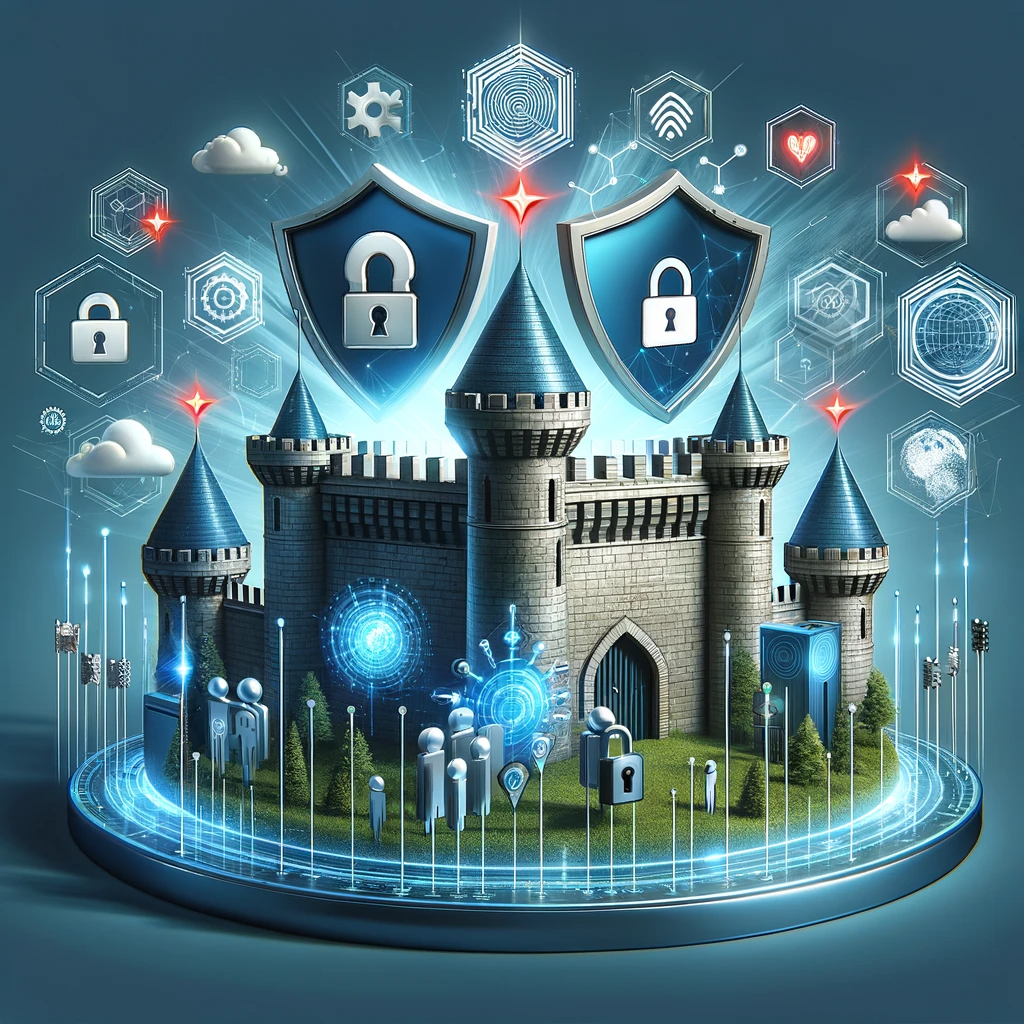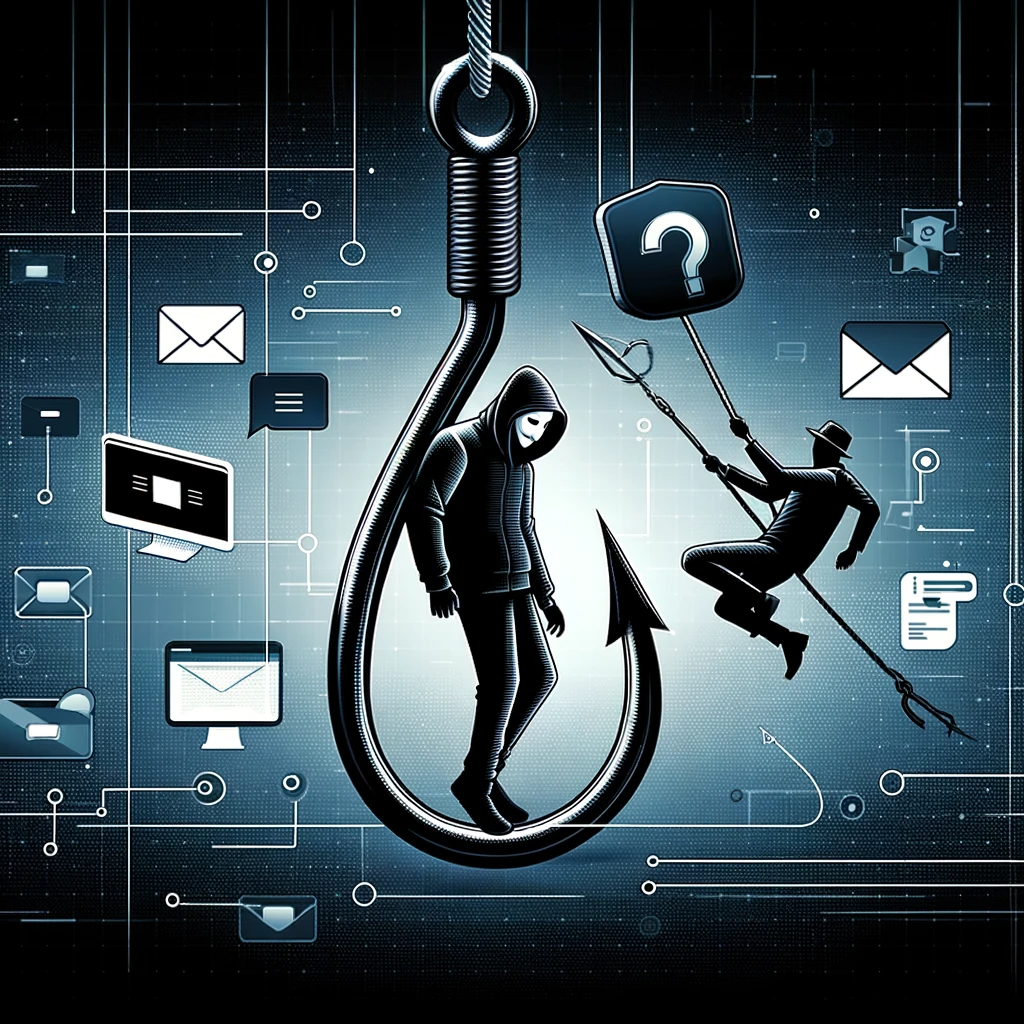2023 Cybersecurity Key Statistics Summary
The cybersecurity landscape in 2023 has been marked by significant challenges and threats, as well as substantial financial impacts. Here's a summary of key statistics and trends that you can include in your yearly summary:
Vulnerability Exploitation Trends in 2023
The cybersecurity landscape in 2023 has been significantly shaped by the exploitation of vulnerabilities. A critical study reported that every one of the 206 vulnerabilities identified in their dataset was weaponized, underlining the sophistication and determination of cyber adversaries. The most common exploitation methods included attacks on remote services, public-facing applications, and strategies for privilege escalation. These tactics not only demonstrate the diverse threat matrix but also emphasize the importance of regular updates, patches, and robust authentication in cybersecurity strategies. Organizations need to adopt a proactive and preventive approach, as opposed to merely reactive responses, to effectively defend against these evolving and complex threats.

The Financial Scope of Cybersecurity
The financial implications of cybersecurity have been massive and are only expected to grow. In 2022, the AI in the cybersecurity market was valued at USD 17.4B, and it's projected to skyrocket to around USD 102.78B by 2032. This growth, at a CAGR of 19.43% from 2023 to 2032, reflects the escalating demand for advanced cybersecurity solutions. The overall cost of cyberattacks is following a similar upward trajectory, with projections estimating a global cost of $10.5 trillion by 2025, growing at 15% per year. These figures underline the critical importance of investing in cybersecurity measures, both for current needs and future resilience.
Rampant Data Breaches and Their Impact
Data breaches have become alarmingly common, with around 3.8 million records being exposed daily. Since 2013, there have been over 3.8 million records compromised each day, which amounts to 158,727 documents per hour, or 44 records every second. High-profile data breaches, such as the one affecting 9 million AT&T customers in 2023, demonstrate the extensive reach and impact of these incidents. These breaches not only result in the loss of sensitive data but also have profound financial implications for the affected organizations.
Ransomware and Malware: A Growing Threat
Ransomware attacks have seen a significant increase in both frequency and severity. The average ransomware payout in 2023 was an astonishing $1,542,333, almost double the previous year's figures. Furthermore, the creation of malware has reached an unprecedented scale, with nearly 1 million new pieces being created every day. These trends indicate a growing sophistication in attack methods and underscore the need for advanced protective measures.
Cyberattacks in the Pandemic Era
The COVID-19 pandemic has been a catalyst for a surge in cyberattacks. During the peak of the pandemic, the FBI reported a 400% increase in cyberattacks. This surge was attributed to the vulnerabilities exposed by the rapid shift to remote work and the overall increase in digital reliance. This period saw cybercriminals exploiting the situation to target both individuals and organizations, leading to a heightened risk of data breaches and financial fraud.
The Rise of Third-Party Attacks
2023 also witnessed a significant increase in third-party attacks. The year-over-year increase in such attacks, from 44% to 49%, along with a 430% rise in supply chain attacks, illustrates the growing threat in this domain. These figures highlight the importance of robust security frameworks that extend beyond an organization's immediate digital boundaries to include third-party and supply chain partners.
Notable Cyber Incidents of 2023
Among the major cyber incidents of 2023, the data breach at T-Mobile stood out, with the personal information of 37 million customers compromised due to API exploitation. Such incidents not only demonstrate the scale at which cyberattacks can occur but also the variety of methods employed by cybercriminals, including sophisticated techniques like API exploitation.
Conclusion
In conclusion, the cybersecurity landscape in 2023 has been marked by significant advancements in attack methodologies, a substantial increase in financial implications, and an ever-expanding scope of threats. This necessitates a more proactive, comprehensive, and forward-thinking approach to cybersecurity, underscoring the critical value of consulting cybersecurity experts for sustainable business operations.
These statistics and trends highlight the evolving and sophisticated nature of cyber threats, emphasizing the importance of robust cybersecurity strategies and the value of consulting cybersecurity experts. Including these details in your summary will underscore the critical need for businesses to prioritize their cybersecurity efforts to protect against these growing threats.
At Z7 Solutions, we believe in providing cutting-edge, comprehensive cybersecurity services with a touch of personal charm. Our Security Operations Center as a Service (SOCaaS) and robust endpoint protection are designed to offer unparalleled security and peace of mind. Our team of experts works tirelessly around the clock, ensuring your network is monitored 24/7 and safeguarded against the ever-evolving digital threats. With Z7, you're not just choosing a service; you're partnering with a dedicated ally in the cyber world. Our approach is not just about technology; it's about trust, reliability, and building lasting relationships. Don't wait for a security breach to realize the importance of expert protection. Reach out to Z7 Solutions today, where your cybersecurity is our top priority. Let's secure your digital footprint together!
Cybersecurity in 2024 and Beyond! Navigating the Future Digital Landscape Safely

In the ever-evolving world of digital technology, staying ahead of cybersecurity trends is not just advisable; it's imperative. As we step into 2024, several key trends have emerged, reshaping how businesses and individuals protect themselves against cyber threats.
The Rise of AI in Cybersecurity
Artificial Intelligence (AI) continues to be a game-changer in cybersecurity. With its ability to quickly analyze massive datasets and identify potential threats, AI is becoming an indispensable tool in the fight against cybercrime. However, this also means that cybercriminals are using AI to develop more sophisticated attacks. Businesses must stay vigilant and equip their cybersecurity arsenals with advanced AI tools to keep pace.
The Growing Importance of Endpoint Security
With remote work becoming the norm, endpoint security has become more critical than ever. Each device that connects to a company's network potentially opens a door for cyber threats. Companies must adopt robust endpoint security measures, ensuring that all devices comply with security standards, regardless of their location.
Increased Focus on Cloud Security
The shift to cloud computing continues to accelerate, highlighting the need for robust cloud security measures. Organizations are increasingly adopting a 'cloud-first' approach, but this shift requires a reevaluation of traditional security strategies. Embracing tools like Cloud Access Security Brokers (CASBs) and implementing stringent access controls are key steps in securing cloud environments.
The Persistent Threat of Ransomware
Ransomware attacks have become more targeted and damaging. In 2024, expect to see ransomware continue to pose a significant threat, especially to small and medium-sized businesses. Regular backups, employee training, and a solid incident response plan are essential defenses against these attacks.
The Emergence of 5G and Its Security Implications
As 5G technology rolls out, it promises faster connectivity and new business opportunities. However, it also brings new security challenges. The increased number of connected devices and the vast amount of data they generate require enhanced security protocols to prevent data breaches.
Recent Global breaches - What can we learn?
Here are several significant real-world cybersecurity breaches from the previous month that involved substantial damages to the affected organizations:
- TransForm Shared Service Organisation (Canada): The Daixin Team claimed responsibility for a cyber attack on TransForm Shared Service Org, impacting five Canadian hospitals in Ontario. This led to the cancellation or rescheduling of surgeries and appointments in some cases, and attackers stole a database containing information on 5.6 million patient visits.
- Outcome: This breach led to a potential $480-million class action lawsuit after at least 270,000 patients had their data breached and reportedly sold on the dark web. The Ontario Provincial Police and the U.S. FBI launched a criminal investigation into the incident.
- The Industrial and Commercial Bank of China (ICBC) - U.S. Arm: ICBC's U.S. arm was hit by a ransomware attack that disrupted trades in the U.S. Treasury market, indicating the far-reaching impact of such attacks on financial markets.
- Outcome: The ransomware attack temporarily disrupted U.S. Treasury markets. ICBC ended up paying the ransom, raising concerns about the vulnerability of leading banks and the need for higher cybersecurity controls worldwide.
- Toronto Public Library (Canada): The Toronto Public Library confirmed the theft of personal information of employees, customers, volunteers, and donors from a compromised file server during a ransomware attack by the Black Basta group.
- Outcome: Post-breach, the library is dealing with service issues, with systems remaining offline until January 2024. Personal information of TPL staff and others dating back to 1998 was affected. The library did not pay the ransom and is aware that some of the stolen data may end up on the dark web.
- Toyota Financial Services (TFS) - Europe and Africa: TFS detected unauthorized access on some of its systems after an attack claimed by the Medusa Ransomware group. The attackers demanded a ransom of $8,000,000 for the deletion of data allegedly stolen from the company.
- Outcome: The company confirmed the ransomware attack but did not disclose if any data was stolen. The extent of the damage or the resolution of the breach was not detailed in the available information.
Why is SOCaaS More Important Now Than Ever Before?
Navigating the digital landscape safely in 2024 requires awareness and proactive measures. By understanding these trends and implementing robust cybersecurity strategies, businesses and individuals can significantly reduce their risk of cyber threats.
In an era where digital security and efficiency are paramount, Z7 Solutions emerges as your ideal partner, offering cutting-edge Managed IT Services tailored to your unique needs.
Our prowess extends beyond conventional IT solutions, specializing in Managed (Security) Services that encompass everything from Help Desk support to advanced infrastructure management.

At the core of our service is a robust commitment to security. Our sophisticated Remote Monitoring and Management (RMM) system is equipped with state-of-the-art sensors that vigilantly monitor all endpoints. This ensures a secure, stable IT environment, continuously safeguarded against evolving cyber threats. Our monthly reports provide a comprehensive overview of your IT health, keeping you informed and one step ahead of potential risks.
Flexibility is key in our approach. We offer tailored coverage options, whether per user or per device, ensuring the most cost-effective and efficient solution for your organization. Our services are complemented by on-site and on-demand engineering support, designed to meet your specific requirements.
As a leading Managed Service Provider (MSP) in Orlando Florida, we understand the significance of staying ahead in the cybersecurity race. Our unique strategy integrates advanced sensors with our 24/7 Network Operations Center (NOC) and Security Operations Center (SOCaaS), forming a robust defense against cyber threats. This multi-layered approach is crucial in a landscape where cybercrime costs are projected to reach $10.5 trillion USD annually by 2025.
Z7 Solutions is not just a Florida MSP provider; we are your strategic partner in ensuring the security and efficiency of your IT infrastructure. Our customers stretch globally. Let us show you how our managed services, backed by our advanced sensor technology and MSP expertise, can fortify your digital assets against the complexities of today's cyber threats. All of our tools have advanced SOC 2 audit reports available upon request.
For a detailed exploration of our capabilities and to discuss a tailored IT solution for your organization, visit https://z7solutions.com/capability-statement/.
For a personalized discussion on how we can meet your unique needs, please reach out for a conversation or book an appointment directly on our CTO’s calendar: https://calendly.com/zack-aleksic/1-1-meeting-with-z7solutions.
Stay informed, stay protected, and let us be your partner in navigating the challenging cyber landscape.
Warm Regards,
Z7 Solutions Support Team
![]()

References:
canhealth.com
gfmag.com
toronto.citynews.ca
malwaretips.com
cybersecurity-review.com
Navigating the Perils of Cloud Security: Lessons from Real-Life Hacks

As a leading Managed Services and Solutions Provider firm based in Orlando, Florida, we have witnessed firsthand the seismic shift in how businesses operate, with many embracing cloud computing for its flexibility, scalability, and cost-efficiency. However, this transition is not without risks. In recent years, we've seen a surge in cyber attacks targeting companies that have moved to the cloud. This blog post aims to shed light on the vulnerabilities and consequences of these attacks, underscoring the importance of bolstering cybersecurity and educating your employees via one of the cybersecurity awareness training platforms.
Real-Life Examples of Cloud-Related Cyber Attacks
Here are some of the recent cloud-based cyber attacks and their impacts
- Meadville Medical Center (2023): This breach occurred when Russian hackers exploited a vulnerability in Progress Software’s MOVEit file transfer application. Around 1,300 patient files from Meadville Medical Center were compromised. The breach was part of a larger incident involving 15 million individuals globally. The data breach was associated with Westat Inc., which collects health care statistics for the National Hospital Care Survey. This attack highlights the risks of using third-party data services and the importance of robust cybersecurity measures for file transfer applications. Regular security audits, timely patching of software vulnerabilities, and thorough vetting of third-party vendors could have mitigated the risks.
- Crum & Forster (2023): Nearly 14,000 consumers had their names and Social Security numbers exposed in this breach. Unauthorized parties bypassed the company's online security systems and accessed files on its servers. The breach was discovered and reported to the Massachusetts Attorney General. The leaked files contained confidential consumer information. This breach underscores the need for stronger network security protocols, continuous monitoring for unusual network activity, and rigorous data encryption to protect sensitive information. Timely detection and response to such incidents are also crucial.
- Hong Kong Ballet (2023): The Hong Kong Ballet suffered a ransomware attack, resulting in unauthorized access to personal user details and internal organizational data. The extent of the breach was unclear due to the encryption of files by the ransomware. The institution immediately launched an investigation with external cybersecurity experts to assess and contain the breach. They also notified the police and the Office of the Privacy Commissioner for Personal Data. Preventative measures advised included regular password changes, monitoring financial statements, and caution against phishing attempts. This incident highlights the importance of robust, up-to-date cybersecurity defenses, regular backups, and employee training in identifying and responding to cyber threats.
- The Newtron Group (2023): The Newtron Group, an electrical construction company based in Louisiana, experienced a data breach where hackers accessed sensitive customer information. On October 13, 2023, the company issued breach notices to 39,608 affected customers. The compromised data included protected medical and health information, Social Security numbers, driver's license numbers, passport numbers, state ID numbers, financial account information, and dates of birth. This breach demonstrates the vulnerability of companies in sectors not typically associated with cyber threats. To prevent such incidents, companies should strengthen their network security, conduct regular cybersecurity training for employees, and implement robust data encryption and access controls.
- Encore Pharmacy (2023): Encore Pharmacy, formerly known as Founder Project Rx, Inc., reported a data breach affecting over 30,000 people after unauthorized access to a business email account was confirmed. Sensitive information including names, contact information, insurance details, prescription and medical information, dates of birth, driver's license numbers, and Social Security numbers were exposed. This breach, announced on September 15, 2023, emphasizes the need for enhanced email security, regular monitoring of access to sensitive accounts, and swift incident response protocols in the healthcare sector to safeguard patient data.
- Shadow PC (2023): Shadow, a cloud-based PC gaming service, suffered a data breach where a database containing customer data was stolen following a social engineering attack against an employee. The breach involved personal information of approximately 533,624 customers, including full names, email addresses, dates of birth, billing addresses, and credit card expiration dates. The attack, which began with the downloading of malware on the Discord platform, highlights the risks posed by sophisticated social engineering tactics in the digital entertainment industry. Following the discovery of the breach, Shadow took immediate steps to secure its systems and reinforce security protocols with third-party providers. Preventive measures in such cases include enhanced employee training on cybersecurity, stringent access controls, and regular audits of security systems.
- Frazier & Deeter (2023): Frazier & Deeter LLC, an Atlanta-based accounting firm, experienced a significant data breach, compromising the personal information of around 19,000 consumers, including their names, Social Security numbers, and financial account information. The unauthorized access was first detected due to unusual activity in their network on May 19, 2023. Frazier & Deeter confirmed the breach and sent out notification letters to affected individuals on October 11, 2023. This breach underscores the importance of continuous monitoring of network activities and implementing advanced cybersecurity measures in the financial sector.
- LDLC ASVEL (2023): LDLC ASVEL, a prominent French professional basketball team, was targeted by the NoEscape ransomware gang. Alerted to a potential breach on October 12, the club confirmed that 32 GB of data, including personal data of players, passports, ID cards, and financial, taxation, and legal documents, were stolen. This attack, revealed on October 9, 2023, highlights the escalating cyber threats faced by sports organizations. ASVEL responded by engaging cybersecurity experts and reporting the incident to France's national data protection authority. The incident raises the need for robust cybersecurity strategies in sports organizations, particularly for protecting sensitive players and operational data.
- West Texas Gas (2023): West Texas Gas, a Texas-based energy company, reported a data breach affecting over 56,000 people. Unauthorized access to their systems was detected in May 2023, with sensitive information, including names and Social Security numbers, being compromised. The company sent out data breach notification letters on October 9, 2023. This breach highlights the growing cybersecurity risks in the energy sector and the need for stringent security protocols, regular system audits, and prompt incident response strategies to protect consumer data.
- Lyca Mobile Data Breach (2023): London-based mobile operator Lyca Mobile experienced a breach in their systems, impacting a significant but undisclosed number of its 16 million global customers. The breach, detected on September 30, led to unauthorized access to customer personal data. Lyca Mobile stores a variety of customer information, including names, birth dates, addresses, identity document copies, customer service interactions, and partial payment card details. The breach possibly exposed customer passwords as well. Lyca Mobile took immediate measures to contain the breach, including isolating and shutting down compromised systems. The nature of the breach and how it occurred remain undisclosed, though data theft suggests a possible ransomware connection. The company informed the UK's Information Commissioner's Office (ICO) about the incident, and the ICO is currently assessing the situation.

Conclusion and Discussion Points
These incidents reveal the diverse and widespread nature of cloud-based cyber threats, impacting sectors from healthcare to entertainment. They underscore the necessity for businesses to adopt a multi-faceted approach to cybersecurity, including continuous monitoring, robust data protection measures, and effective incident response plans.
- How are different industries adapting their cybersecurity strategies in response to these emerging threats?
- What lessons can we learn from these incidents to enhance cloud security across various sectors?
- How can businesses effectively implement cybersecurity best practices without relying solely on specific products or services?
This discussion is crucial for building a more resilient and secure digital ecosystem. By learning from these incidents, businesses can better prepare and protect themselves against the ever-evolving landscape of cyber threats. We will be discussing topics like this in our next posts. We will make sure to get some of the latest attacks and then we will dive in to figure out what is that “little more” we can do to minimize some risks - or potentially close some existing gaps that you might have. You never know. Our goal is to bring value and get you folks who are reading more ideas and information here.
We will close it with some impacts and aftermath twists that organizations can face after the major cyberattack.
Impact and Consequences of Cloud-Related Hacks
- Financial Losses:
- Companies face direct financial losses due to ransom payments, data recovery costs, and legal fees. Indirect costs include loss of business, decreased stock value, and reputational damage.
- Operational Disruption:
- Cyber attacks disrupt operations, leading to downtime and loss of productivity. For smaller businesses, this can be catastrophic, sometimes leading to complete shutdown.
- Legal and Compliance Ramifications:
- Breaches often result in legal actions and hefty fines, especially when they involve sensitive customer data and violate regulations like GDPR or HIPAA.
Conclusion:
The transition to the cloud, while beneficial, exposes businesses to new cyber threats. The examples of Crum & Forster, West Texas Gas, and others serve as sobering reminders of the importance of robust cloud security measures. We strongly advocate for integrating SOCaaS with continuous network packets monitoring, and a comprehensive DR strategy into your security framework. It's not just about protecting data; it's about safeguarding your business's future.
- How can businesses balance the advantages of cloud computing with its security challenges?
- What measures does your organization take to protect against cloud-based cyber threats?
- How does your disaster recovery plan address potential cloud security incidents?
We will continue to discuss and we hope that you enjoyed reading our article!
Thank you!
Z7 Solutions
Resources:
Seculore.com
JDSupra.com
theregister.com
TechCrunch.com
idstrong.com
news.yahoo.com
Understanding the Origins of Cyber Attacks
Cyber attacks can target any device at any time, raising the question: how do you know which devices need protection? Grasping the origin of these attacks is crucial.
Historically, cyber attacks originated externally, primarily from the internet. Cybersecurity firms countered these threats with firewalls, Intrusion Detection Systems (IDS), and Intrusion Prevention Systems (IPS), alongside antivirus software. But these traditional methods are now less effective. Modern malware, often encrypted, can evade detection by these once-reliable defenses. The once formidable barrier provided by edge devices against external threats has become less of a hindrance to hackers.

Cybersecurity has evolved similarly to military strategies, continually advancing. Attackers now frequently circumvent edge protections, infiltrating networks directly from within. This could happen through methods like email phishing, visiting unsafe websites, or using unsecured networks for online gaming.
Despite the continued use of edge devices, wireless access points, servers, and personal devices, sophisticated malware attacks can bypass the former lines of defense. Many companies are still dependent on traditional firewalls and anti-virus software, unaware that threats can originate internally. This approach is no longer sufficient. Comprehensive cybersecurity solutions are needed for full network protection.
Effective cybersecurity services ensure immediate notification and isolation of any attack, regardless of its source. This approach provides a centralized security system, offering essential support and protection.
For those relying solely on edge protection and anti-virus software, or experiencing issues with current cybersecurity measures, it's advisable to seek more advanced solutions to address these evolving threats.
Exploring the Various Forms of Malware
Malware, short for malicious software, refers to harmful programs designed to infiltrate and damage computers or networks without detection. Common types of malware include viruses, adware, spyware, ransomware, worms, and Trojan horses. These variants pose significant threats to computer systems, prompting cybersecurity firms to continually seek and neutralize these harmful codes.
Each malware type operates uniquely, posing distinct dangers. Here's an overview of various malware types and their characteristics:

Viruses:
- Purpose: Self-replicating software activated upon execution
- Risk: Data corruption or deletion
- Common Sources: Email attachments
Adware:
- Purpose: Displays unwanted advertisements, typically as pop-ups
- Risk: Server corruption, internet access disruption
- Common Sources: Web downloads, unwanted programs
Spyware:
- Purpose: Stealthily attaches to the operating system
- Risk: Gathers various types of personal information
- Common Sources: Agreed upon terms and conditions
Ransomware:
- Purpose: Crypto-virology based software that locks users out of their files
- Risk: Denies file access until a ransom is paid
- Common Sources: Email attachments, downloads
- Note: Illegal activity
Worms:
- Purpose: Exploits vulnerabilities to spread virus-like
- Risk: Network damage, bandwidth overload
- Common Sources: Vulnerable code exploitation
Trojans:
- Purpose: Disguised as legitimate software, activated upon interaction
- Risk: Various forms of computer damage - disruption, theft, infection
- Common Sources: Seemingly normal social media ads, web links
This summary highlights key aspects of these malware types, each equally concerning when infecting a computer. Additional malware forms, such as Botnets, Rootkits, and Spam, also exist.
Initially used for pranks and experiments, modern malware is invariably destructive. Cybersecurity firms employ tools like SIEM (Security Information and Event Management) solutions to combat these threats. Immediate consultation with a cybersecurity company is advised upon malware detection.
Beyond malware, other online threats include spoofing, phishing, and various hacking techniques. Proactive measures and expert consultation are essential to identify and mitigate these threats.
Global Trends in Cybersecurity: Understanding the Landscape
The digital age has heightened our awareness of cyber threats. It's crucial to understand not only the risk of online attacks but also their origins. Globally, cybersecurity firms are vigilantly monitoring network activities to identify potential threats. Their efforts yield insightful data revealing the attackers and the attacked. This knowledge is key to grasping the nature of the cyber threat landscape.
Here are some revealing statistics:

Countries Most Active in Cyber Attacks:
- China – 21%
- United States – 11%
- Brazil – 7%
- Russia – 6%
- India – 5%
- Japan – 4%
Countries Most Targeted by Cyber Threats:
- United States – 69%
- Spain – 6%
- China – 6%
- Singapore – 5%
- France – 3%
- UK – 3%
Cybersecurity firms utilize various tools, including geofilters and software, to pinpoint the origin of attacks through IP addresses. This data raises important questions about why certain countries are more involved in cyber activities, either as attackers or targets.
A notable point is that the top six countries in cyber aggression account for about 55% of global cyber attacks, with the remaining 45% distributed among other nations. Common factors among these countries include large populations and advanced technologies, potentially skewing the results.
Conversely, the six most targeted countries comprise 92% of global cyber threats. The United States, in particular, stands out as the most frequent target. Economic and political power seem to correlate with the level of targeting. Symantec reports that 90% of these attacks aim at intelligence, 11% for disruption, and 9% for financial gain.
According to various sources, the average cost of a data breach globally is $4.35 million, while in the U.S., it's $9.44 million. U.S. companies face more than double the risk of cyber attacks compared to companies in other countries. To mitigate these risks, it's advisable for companies, especially those in the U.S., to engage with reputable cybersecurity firms.




